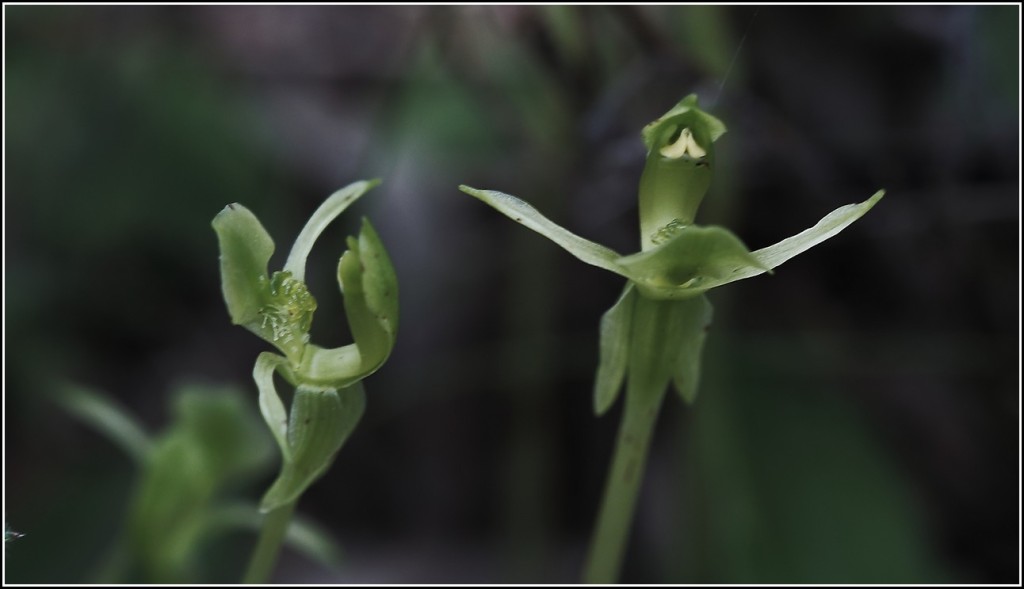DAINTY BIRD ORCHID – Chiloglottis trapeziformis This species of orchid is extremely rare in the Kooyoora region. It was officially reported at one site on private property north of Mt Kooyoora in 1979 by Mavis Needs. Members of the Friends group monitored the site for many years. Increasing weed infestation was noted around the site from about 2005. It is thought that this may have altered the soil chemistry enough to affect the viability of this species as the number of plants in the area rapidly declined over the next couple of years and the last flowering at this locations occurred in 2007. – refer Photo 1. Repeat visits to the site and searches of the area in the years to now have failed to locate any sign of this species again.
On a recent visit to the Park by Michael and Kathy Beamish (members of ANOS) from Melbourne, they reported finding a population of Chiloglottis trapeziformis in the Park. Following communication with them and several failed attempts to relocate their find, a group of the Friends this week were successfully able to relocate and verify their find. This is both a significant and interesting find, not only is it 15 years since the species has been sighted in the area but the whole colony, (which is very localised but consists of a large number of plants) contains only of hypochromic plants. This is a naturally occurring genetic condition that affects the pigment or colour of the plants. The production of red, purple and blue are partially or fully blocked leaving pale yellow, green or white pigments to predominate – refer photos
A reminder that native flora in the Kooyoora State Park is protected by law. Those searching for orchids need to be aware of accidental damage that could be done if extreme care is not taken. Plants can be hard to see if not flowering and for some species (such as this) even when flowering, and can become the victims of trampling. Frequent visitation causes soil compaction and stops seedling establishment and increases the risk of introducing weeds and diseases to the area.







